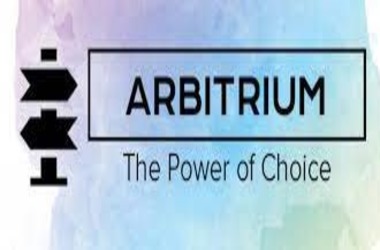
Arbitrum Nitro eliminates network restrictions and delivers numerous significant enhancements. Earlier, the transaction processing capability of Arbitrum was capped by preserving network speed and stability. Now that the network has been updated to Nitro, these restrictions have been removed, greatly boosting the volume of trades the infrastructure can process.
The Nitro update has also contributed to the compression of transaction information returned to the Ethereum mainnet for confirmation. Ni upgrade is expected to minimize the number of zero bytes in bundles of Arbitrum transactions, leading to cheaper transaction costs for potential users. While Arbitrum now provides 90 to 95% cheaper rates than Ethereum’s mainnet, estimations show that the Nitro update might cut prices by an additional 27% by removing zero bytes.
Nevertheless, the majority of the Nitro improvement consists of a new verifier that can execute the dynamic fraud proofs of Arbitrum employing WebAssembly code. This implies that the Arbitrum machine may now be developed and built utilizing conventional languages and resources, as opposed to the previously employed bespoke coding language and compiler. The outcome is a more simplified and user-friendly platform for those developing on Arbitrum, which the core team thinks will result in a surge in network advancement.
Steven Goldfeder, CEO, and co-founder of Offchain Labs, has pointed out that the upgrade will “tremendously boost network processing ability and drastically cut expenses,” attracting new ventures to the platform. He stated that Arbitrum is “the best Ethereum-compatible rollup developed,” elaborating that Nitro’s core structure is identical to Ethereum’s, thus the platform can handle Ethereum-based creator and user tools. Along with the basic upgrades made to the Arbitrum mainnet, Nitro has integrated the chain’s AnyTrust technology, a safe and cost-effective scaling mechanism geared for gaming and socializing apps. The same architecture underpins the upcoming new Abritrum Nova chain, which includes a “Data Availability Committee” comprised of representatives from Google Cloud, FTX, Reddit, Consensys, P2P, and QuickNode.
With Nitro increasing the transaction throughput of Arbitrum, the network is expected to relaunch its Odyssey Campaign. Odyssey was terminated days after its June debut owing to rising transaction volumes forcing gas prices on Layer 2 to eclipse than on Ethereum’s mainnet. The purpose of the promotion is to integrate people into the Arbitrum environment by awarding them with NFTs for completing on-chain activities.
Arbitrum is one among numerous Layer 2 networks that provide Ethereum scaling options. Since its inception in 2017, Arbitrum One has been Ethereum’s most dominating Layer 2 network, with a total locked value of around $2.5 billion, according to L2Beat. Goldfeder said that its development has been “completely organic” since the initiative has not given network incentives like tokens (in comparison to its largest rival, Optimism, Arbitrum lacks a token).
The venture employs Optimistic Rollups to group transactions and relays them to the Ethereum mainnet for authentication, hence boosting capacity and decreasing transaction costs. Numerous Ethereum DeFi heavyweights, like as Uniswap, Curve, and Aave, have placed their contracts on the blockchain. GMX, Dopex, and Vest Finance are a few of the native protocols supported by Arbitrum.